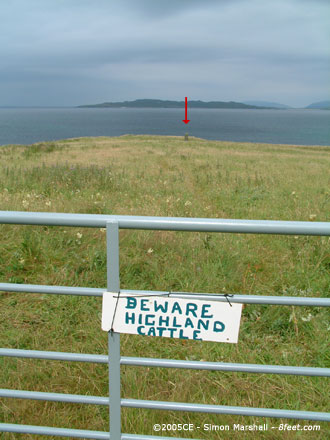Visited 3rd and 6th August 2004: Lou and I visited Na Dromannan on two occasions, partly because I left the camera in the car on the first visit, but also because we were bowled over by the stones and their location.
It’s such a peaceful spot up on the hill overlooking the other big Callanish sites (most clearly Calanais itself). We took the opportunity to sit in quiet contemplation (in a Swarth Fell stylee). You’ve got to make this little pilgrimage if you’re able!
This route is not very exact, so use it as an aide rather than relying on it. I’ve based it on memory and some photos that I took. I wouldn’t recommend the walk for anyone with limited mobility. Pushchairs or wheelchairs are out of the question because of the frequently changing levels of peat. Good footwear with ankle support is advisable, and if it’s been raining be ready to get wet feet.
Starting from the A858, park in the lay-by nearest to Cnoc Fillibhear Bheag. Cross the road and follow it, heading away from Calanais, until you are past the cottages on your left (I think you may cross over a cattle grid, but I’m not 100% sure). Here there’s a gate taking you into a small paddock on the other of which is another gate. From this point on you’re in open countryside.
Keeping to the east of the little hill behind the cottages you should find a peat cutters track. This track starts off being well defined, but very uneven, leading off to the north-east. You can follow the path for about half a mile before it becomes almost impossible to distinguish from the heather and peat. At this point you should change course and head north towards high ground. You should have the lake off to your right at the point when you change course.
This is where the going get tougher. You’ll find yourself going from one heather covered island of peat to another. The ‘valleys’ between each island can get very wet very quickly if it rains. Wherever possible keep on the high ground. The first ‘bump’ to aim for has a couple of distinctive boulders on the summit which make it quite distinctive. Once you’re on the top of that you can potentially see the bump that Na Dromannan sits on. We were lucky because the spoil heaps from the archaeological dig made for an excellent target, but once they’re gone it could be tricky finding the site without a GPS or some top notch map reading.



























